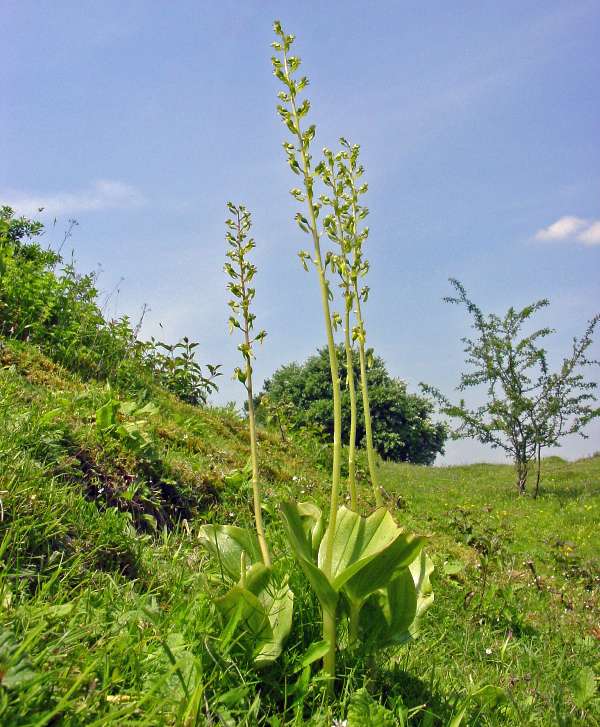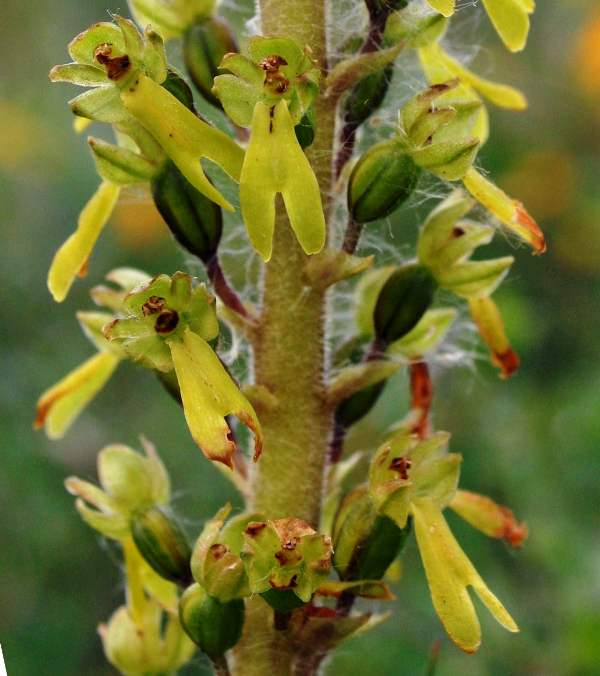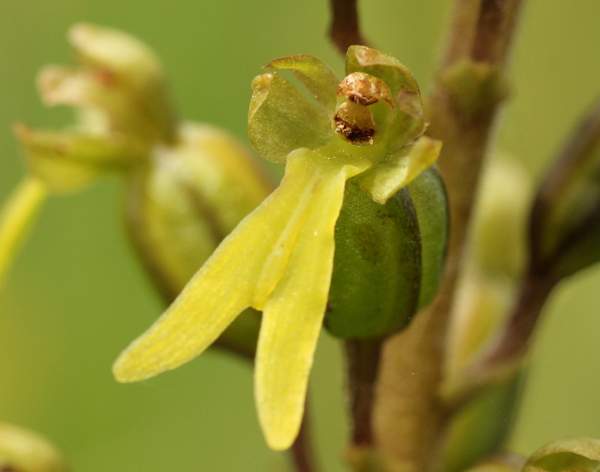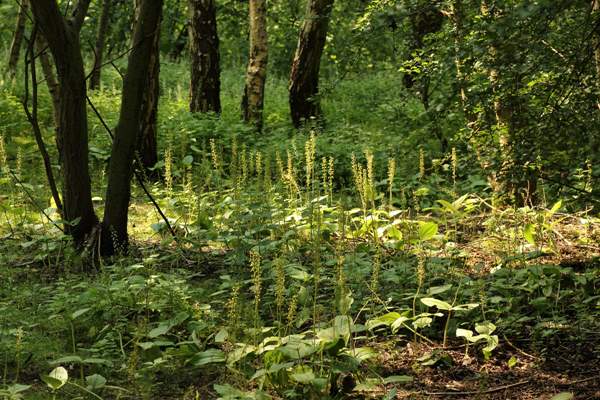Trees Birds Mammals Fish Amphibians Reptiles
Wild Algarve
Bookshop
Neottia ovata - Common Twayblade
Phylum: Magnoliophyta - Class: Liliopsida - Order: Orchidales - Family: Orchidaceae

Description
Despite growing to around 75cm in height this orchid is inconspicuous because the flowers as well as the leaves and stems are green and it blends perfectly with the grassy habitats where it is mainly found. The name twayblade refers to the pair of oval leaves (two blades) near the base of the plant. The flower spike can have as many as 100 separate flowers.

The specimens shown above were photographed in JUne at Noar Hill in Hampshire and at Kenfig National Nature Reserve in South Wales .

Distribution
Previously better known as Listera ovata, this orchid is widespread but localised throughout the UK and Ireland. It is often found in large colonies, particularly in chalk grassland. In Wales the best places to see these common orchids are in the famous sand dune nature reserves which are dotted along the entire coast. Kenfig, Dyfi and Newborough Warren National Nature Reserves are home to literally thousands of Common Twayblades, but be ready to be distracted by a whole host of other more colourful orchid species which occur at the same time.
Common Twayblade grows in open woodland rides, on roadside verges and in grasslands.
This orchid is predominantly a European species and occurs from as far north as Scandinavia to as far south as Crete and Sicily. We found and photographed many of these orchids during a visit to Slovenia in central Europe where Common Twayblades are found in the mountain meadows there and throughout the region.

Habitat
Mainly found in chalk grasslands but also occurs in open woodland and is occasionally found in slightly more acidic habitats.
Flowering times
From May to July.
Varieties and Hybrids
There are no recorded subspecies or hybrids.
There are two varieties:
Neottia ovata var. trifoliata has a third smaller leaf, which can be either above or below the other leaves, and is a relatively common find.
Neottia ovata var. platyglossa has a shorter, broader lip with divergent lobes; it has been found in sand dunes in South Wales.
Etymology
The genus name Neottia means 'nest',a reference to the tangled root structure of orchids in this genus. The specific epithet ovata means 'egg shaped' and refers to the shape of the leaves.
Reference sources
The Plant List
Sue Parker (2023) Wild Orchids of Wales - how, when and where to find them; First Nature e-book (Amazon Kindle format)
Anne and Simon Harrap (2005) Orchids of Britain and Ireland; A&C Black
Pierre Delforge (2005) Orchids of Europe, North Africa and the Middle East; A&C Black
Den Nordiska Floran (1992) Bo Mossberg, Stefan Ericsson and Lennart Stenberg; Wahlstrom & Widstrand
Acknowledgements
This page includes pictures kindly contributed by Elaine Hagget.
Sue Parker's latest ebook is a revised and enlarged edition of Wild Orchids in The Burren. Full details here...
Buy it for just £5.95 on Amazon...
Sue Parker's new ebook is a comprehensive and fully revised edition of her acclaimed field guide to the Wild Orchids of Wales. Full details here...
Buy it for just £5.95 on Amazon...
Sue Parker's 5-star acclaimed field guide to the Wild Orchids of the Algarve is now available as an ebook. Full details here...
Buy it for just £5.95 on Amazon...
Please Help Us: If you have found this information interesting and useful, please consider helping to keep First Nature online by making a small donation towards the web hosting and internet costs.
Any donations over and above the essential running costs will help support the conservation work of Plantlife, the Rivers Trust and charitable botanic gardens - as do author royalties and publisher proceeds from books by Pat and Sue.